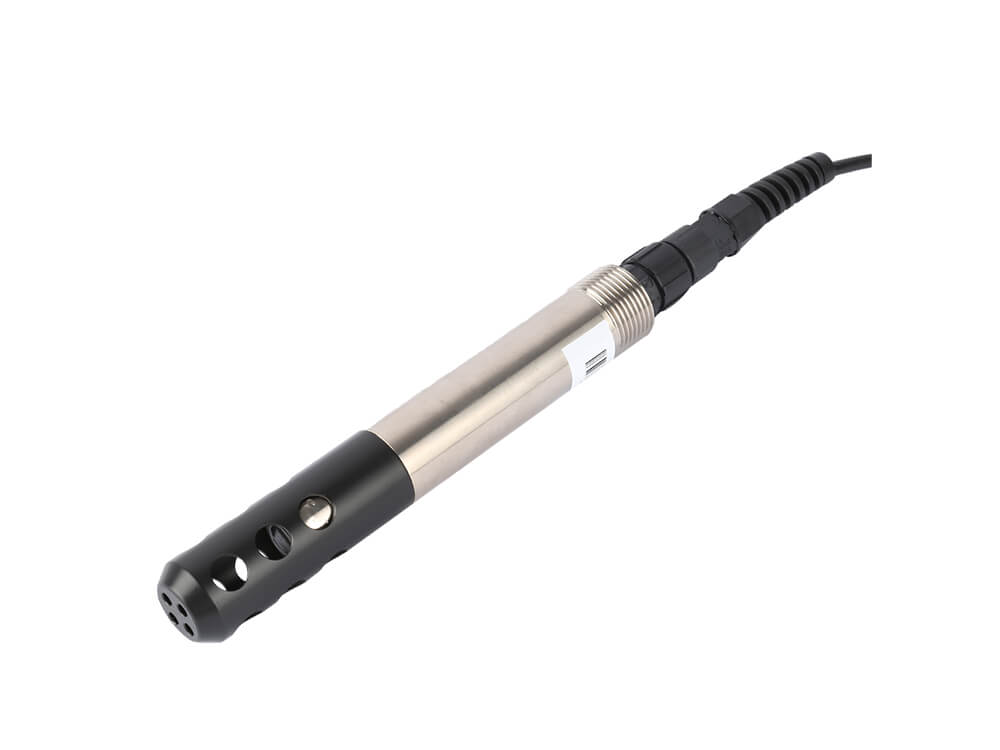Dissolved Oxygen Sensors: Enhancing Water Quality Monitoring for Sustainable Ecosystems

Water quality is a critical component of environmental health, impacting not just aquatic life but also human populations and industries. One of the most vital parameters for assessing water quality is dissolved oxygen (DO), the amount of oxygen dissolved in water that aquatic organisms rely on for survival. Maintaining optimal oxygen levels is necessary for the survival of fish, plants, and microorganisms in aquatic ecosystems. For effective water management and ecological preservation, it is essential to monitor DO levels accurately and consistently.
This is where dissolved oxygen sensors play a pivotal role. These sensors provide precise measurements of dissolved oxygen levels in water, enabling industries, municipalities, and environmental agencies to manage water bodies effectively and ensure ecosystem sustainability. In this blog, we will explore the significance of dissolved oxygen sensors, how they work, and their various applications in monitoring water quality and preserving aquatic environments.
Understanding the Role of Dissolved Oxygen in Aquatic Ecosystems
Dissolved oxygen refers to the oxygen that is available in water for organisms such as fish, invertebrates, and microorganisms. Oxygen enters the water through two main mechanisms:
-
Diffusion from the atmosphere: Oxygen naturally dissolves into water from the atmosphere at the water’s surface.
-
Photosynthesis by aquatic plants and algae: Aquatic plants, algae, and phytoplankton produce oxygen through photosynthesis.
Oxygen is essential for the respiration of aquatic organisms, who rely on it to convert food into energy. When dissolved oxygen levels drop too low, it can lead to hypoxia (low oxygen) or even anoxia (complete lack of oxygen), both of which can be harmful or fatal to aquatic life. For instance, fish and invertebrates will struggle to breathe in hypoxic conditions, and larger fish kills may result from a sudden oxygen depletion event.
The optimal DO concentration varies based on species and water temperature, but generally, a level between 6 and 9 milligrams per liter (mg/L) is considered ideal for most aquatic species. As such, monitoring dissolved oxygen is a crucial part of maintaining healthy aquatic ecosystems, whether in rivers, lakes, oceans, or controlled environments like aquaculture tanks.
Why Accurate Monitoring of Dissolved Oxygen is Essential
Maintaining the right oxygen levels in aquatic environments is essential for various reasons. Monitoring dissolved oxygen is key to addressing potential risks such as pollution, eutrophication, and climate change.
1. Preventing Fish Kills
In warm water conditions, dissolved oxygen levels can drop significantly, leading to fish kills. As water temperatures rise, oxygen becomes less soluble, making it harder for fish and other aquatic organisms to absorb oxygen. Low DO levels can also occur when organic waste decomposes in water, consuming available oxygen and further exacerbating hypoxic conditions. Regular monitoring of oxygen levels can help prevent such incidents by alerting stakeholders to the early signs of oxygen depletion, allowing for timely corrective measures such as increasing aeration or reducing nutrient loading.
2. Controlling Eutrophication
Eutrophication occurs when excess nutrients, often from agricultural runoff, enter water bodies and promote excessive algal growth. When these algae die, their decomposition process consumes large amounts of oxygen, leading to oxygen-depleted zones in the water. By monitoring dissolved oxygen levels, environmental agencies can track the impacts of eutrophication and take steps to manage nutrient pollution effectively. This can help restore oxygen levels and prevent the creation of “dead zones” in lakes, rivers, or coastal waters.
3. Assessing Water Treatment Efficiency
In wastewater treatment plants, dissolved oxygen is a key component of the aerobic treatment process. In these systems, oxygen is supplied to bacteria that help break down organic pollutants in the wastewater. The presence of adequate oxygen is crucial for the success of this biological process. Dissolved oxygen sensors are integral to monitoring oxygen concentrations in aeration tanks, allowing operators to adjust oxygen supply as needed and improve the efficiency of the treatment process.
4. Supporting Biodiversity Conservation
Oxygen is critical for maintaining biodiversity in aquatic environments. Low oxygen levels can threaten species survival, leading to a loss of biodiversity and disrupting ecosystem functions. For example, fish species that require cooler, oxygen-rich water may be displaced by more tolerant species in hypoxic conditions, altering the entire food web. By monitoring dissolved oxygen, conservationists can identify vulnerable ecosystems and implement strategies to protect them.
Types of Dissolved Oxygen Sensors and Their Working Principles
Dissolved oxygen sensors work by measuring the concentration of oxygen dissolved in water, typically in real-time, which helps manage water quality effectively. There are two primary types of dissolved oxygen sensors: electrochemical sensors and optical sensors.
1. Electrochemical Sensors (Clark-type Sensors)
Electrochemical sensors, often referred to as Clark-type sensors, are the most commonly used type of do sensor. They operate based on the principle of electrochemical reactions. These sensors consist of two electrodes—one acting as the working electrode and the other as the reference electrode—separated by a semi-permeable membrane. When oxygen passes through the membrane and reaches the electrode, a reduction reaction occurs, producing an electrical current. The magnitude of this current is directly proportional to the amount of dissolved oxygen present in the water.
Clark-type sensors are widely used in both environmental and industrial applications. They are accurate and relatively cost-effective, but they require regular maintenance to replace the membrane and clean the electrodes.
2. Optical Sensors
Optical sensors use fluorescence technology to measure dissolved oxygen levels. These sensors contain a coating made of a fluorescent dye that reacts with oxygen. When exposed to light, the dye emits fluorescence that decreases as the concentration of oxygen increases. The intensity of this emitted fluorescence is inversely proportional to the oxygen concentration in the water.
Optical sensors offer several advantages, including low maintenance and greater resistance to fouling, making them ideal for long-term monitoring in harsh environments. They also provide highly accurate readings without the need for regular calibration or replacement of components like membranes, which can be a significant drawback with electrochemical sensors.
Applications of Dissolved Oxygen Sensors
The use of dissolved oxygen sensors spans across various sectors. Some of the key applications include:
1. Aquatic Ecosystem Monitoring
Environmental agencies use dissolved oxygen sensors to monitor oxygen levels in rivers, lakes, and oceans. Continuous monitoring helps detect early signs of hypoxia or eutrophication, providing valuable data to support decisions about water quality management, pollution control, and conservation efforts. For example, sensors are installed in sensitive coastal areas or estuaries to track changes in oxygen levels due to runoff, algal blooms, or climate change.
2. Aquaculture
Aquaculture operations depend on dissolved oxygen to ensure the health of fish, shellfish, and other aquatic organisms. In closed aquaculture systems such as fish farms or hatcheries, oxygen is often added to the water artificially. DO sensors provide critical data to ensure the oxygen concentration stays within optimal levels for different species. This is especially important in aquaculture, where any disruption in oxygen levels can cause stress or death to the cultured organisms, resulting in reduced productivity and financial losses.
3. Wastewater Treatment
In wastewater treatment plants, dissolved oxygen sensors are crucial for ensuring the proper functioning of the biological treatment process. Aerobic bacteria that break down organic waste require a steady supply of oxygen. By continuously monitoring dissolved oxygen levels, plant operators can adjust aeration rates to optimize the treatment process. This not only improves efficiency but also reduces energy consumption and operating costs.
4. Industrial and Laboratory Use
In various industries, such as chemical production, fermentation, and bioprocessing, dissolved oxygen is a key parameter for optimizing production processes. For instance, in fermentation (such as brewing or biotechnology), maintaining the right level of oxygen is essential for the growth of yeast or microorganisms. Similarly, bioreactors used for producing biofuels, pharmaceuticals, and other bioproducts require precise oxygen management, and DO sensors play a vital role in ensuring consistent production quality.
Key Benefits of Dissolved Oxygen Sensors
-
Real-time Monitoring: Dissolved oxygen sensors offer real-time data, allowing for immediate action if oxygen levels fall outside the ideal range.
-
Efficiency Optimization: In wastewater treatment and aquaculture, accurate DO monitoring helps optimize energy usage and improve operational efficiency.
-
Cost-effectiveness: With continuous monitoring, corrective actions can be taken before problems escalate, saving costs associated with environmental damage, treatment failures, or loss of aquatic life.
-
Protection of Aquatic Life: By detecting oxygen-depleted zones early, DO sensors help preserve aquatic ecosystems and prevent species loss due to hypoxia or anoxia.
-
Regulatory Compliance: For industries such as water treatment and aquaculture, DO sensors help ensure compliance with environmental regulations and quality standards.
Conclusion
Dissolved oxygen sensors are indispensable tools for monitoring and managing water quality. They provide vital insights into the health of aquatic ecosystems, help industries optimize their processes, and ensure compliance with environmental standards. As the demand for water conservation, environmental protection, and sustainable industry practices increases, dissolved oxygen sensors will continue to play a crucial role in safeguarding water quality and the health of aquatic life. With advancements in sensor technology, the future of water quality monitoring looks more accurate, efficient, and cost-effective than ever before.



